Bouldering with boba? A ‘mecca of outdoorsiness’ is here for L.A.’s AAPI community
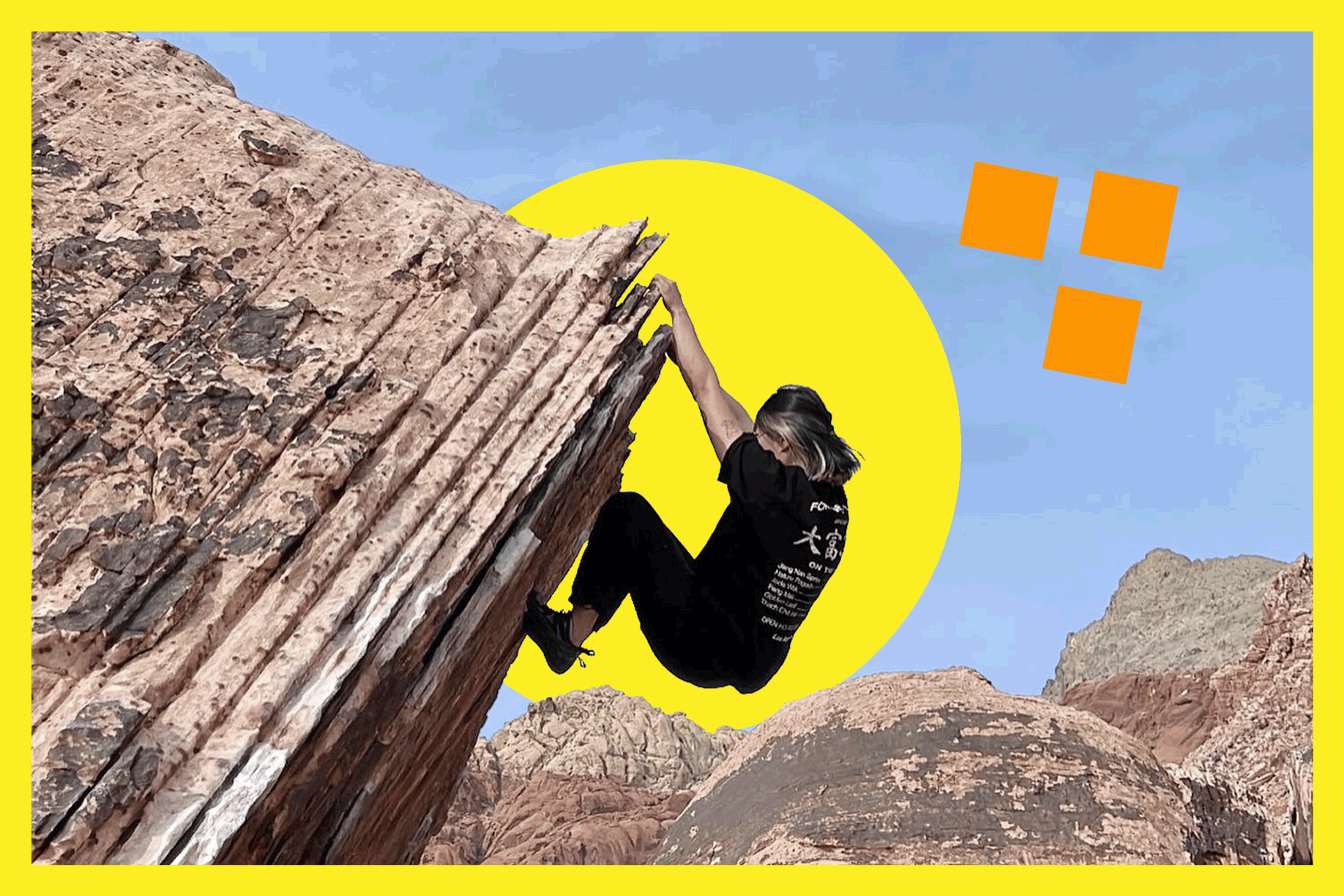
- Share via
While attending UC San Diego from 2015 to 2019, Christina Roh noticed that “the outdoors wasn’t seemingly as accessible to the AAPI community. A lot of Asian students didn’t seem as inclined to wanting to experience beaches and hikes as other outdoorsy friends.”
Roh, 25, felt passionately that her peers were missing out, so when she graduated and returned to her hometown of Los Angeles, she looked for organizations mobilizing Asian American communities to get outside. “It was only Outdoor Asian,” she says. “And they didn’t even have a SoCal chapter at that point.”
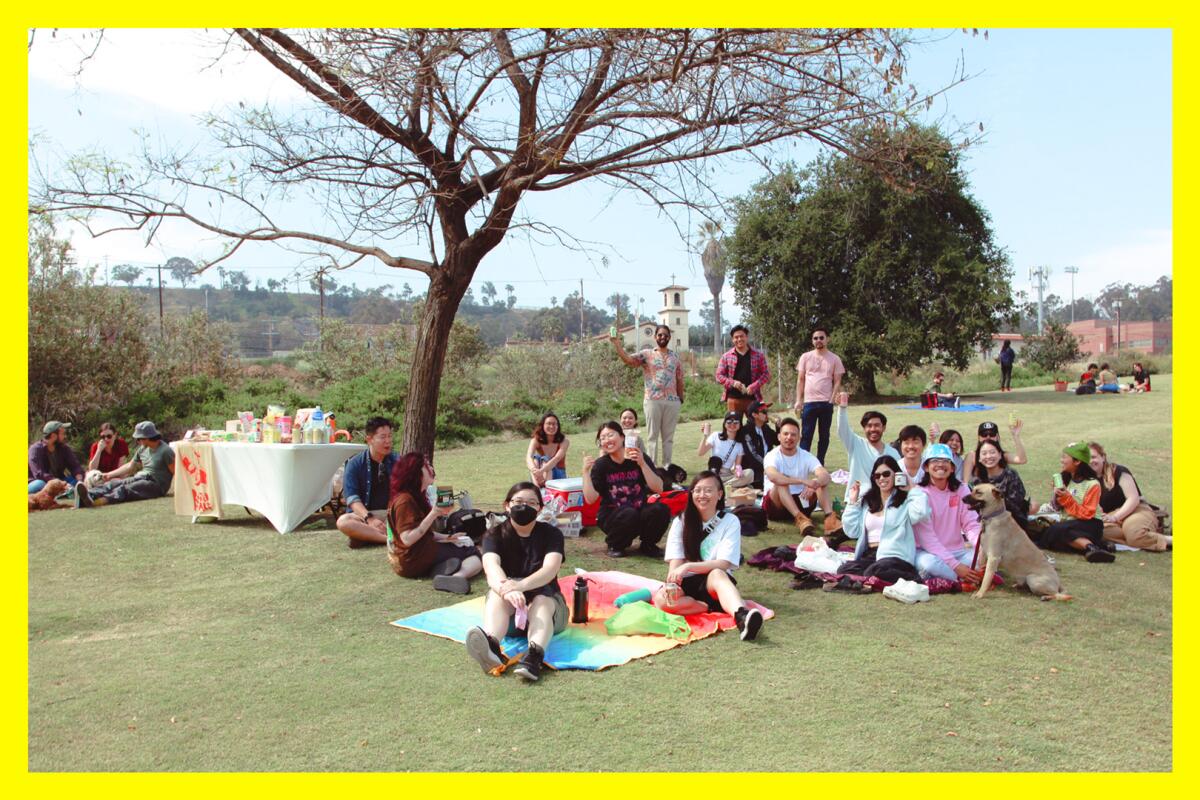
Roh asked the organization if she could start a chapter to encourage Angelenos of AAPI descent to experience the full extent of what she calls “a mecca of outdoorsiness.” She got the OK, and her group, Outdoor Asian Los Angeles kicked off with community building and relaxed hikes in Griffith Park. “It’s kind of daunting to just set out in L.A. and try to meet friends,” Roh says. “The hangouts ended up being super fulfilling.”
Get The Wild newsletter.
The essential weekly guide to enjoying the outdoors in Southern California. Insider tips on the best of our beaches, trails, parks, deserts, forests and mountains.
You may occasionally receive promotional content from the Los Angeles Times.
Then, just a few months into the start of Outdoor Asian L.A., the COVID-19 pandemic struck. For Asian Americans, catching COVID wasn’t even the worst outcome of leaving their homes. They were being targeted for hate crimes at startling rates. Roh organized an online event where group members held space for community emotions, whether sorrow or rage.
“We had community members share that even in our safe spaces, the outdoors and the parks, they were experiencing hate crimes and harassment,” Roh says. “Historically, the parks have been a place of violence against people of color and specifically Indigenous communities, so I wondered, ‘Are we regressing? Is it not possible for the outdoors to be a healing site based on the history of how they were built?’”
On May 22, 2021, Outdoor Asian Los Angeles reconvened for its first event since the pandemic began. Gathering at Canyon Park in Orange County, members brought together friends and family of all ages for an accessible hike.
Roh saw the gathering as a moment of strength and an opportunity for resource training, so she added bystander intervention training to the program. “We asked our members to consider, ‘What can you do to support this community, especially if you’re on a hike and you see someone doing something anti-Asian?’” she says. “‘What can you do that doesn’t put you at risk, but is a way to help our community when we’re feeling so distraught and lost?’”

At times, she does feel scared while hiking, Roh says, but it doesn’t stop her from going outdoors. “A lot of Asian people are told not to take up space. But we will not let the outdoors be taken away from us, because it’s joy for us.”
One of the organization’s primary goals is to keep its events as accessible as possible, especially in terms of finances and locations. “A lot of people in the city don’t necessarily have access to a car, or [they] worry about parking fees, or they just don’t want to have to go all the way out of the city,” Roh says. That’s why so many of the group’s hikes are in Burbank and the Verdugo Mountains, or in places such as L.A. State Historic Park, which is close to Chinatown, home to a large Asian American community.
In March, Outdoor Asian Los Angeles collaborated with Trash Panda Cycling to bring AAPI bikers to Frogtown neighborhood, and this past weekend, the group threw a community potluck at Will Rogers State Beach in collaboration with the people of color wellness education platform the Honey Block. The group has a Bouldering and Boba event planned for the end of May and a Pride event in June featuring a queer hiking event and social club meeting. Neither of the upcoming events has a date yet, but Roh says members will be able to find info on Facebook.
I spoke with Roh about the Korean American relationship with the outdoors, how Outdoor Asian L.A. is helping fight Asian American generational trauma and why climbing gyms can be a gateway to getting outside.
This interview has been edited for length and clarity.
The Merrill inclusivity report found that members of the Asian community begin experiencing the outdoors later in life, compared with other groups and that they are 24% less likely than those in the white community to introduce their children to traditional outdoor activities. Do you think this is why so many Asian Americans still struggle to get outdoors?
My mom never took me camping or hiking, and then, when I was in college, the only people that were camping and hiking were the white students, so it did feel like, “Oh, this isn’t for me,” or “I don’t know how to even get into this.” Because I don’t look like the people who normally do this type of activity, I feel like a fraud sometimes. I’m hoping that this group is partially a way for Asian folks to see that yes, we can be outside, and we can create these spaces for ourselves.
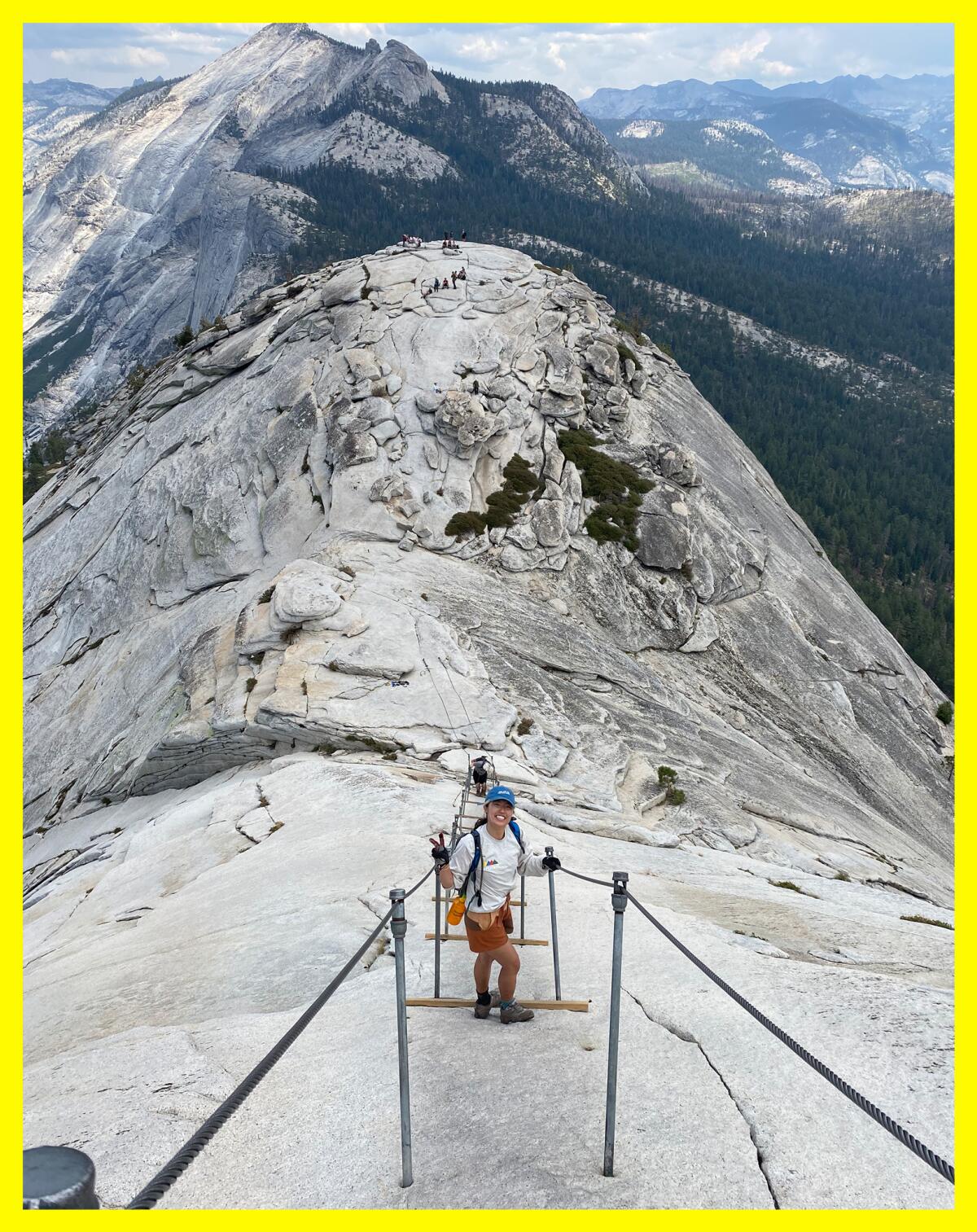
Even though I was raised hiking and camping, I was also raised by risk-averse immigrant parents, so climbing has taught me to take calculated risks that are achievable. But sometimes I feel guilty, like I should be working instead — and sometimes I take it really hard when I fail to send (finish) a route, because I have been raised to think that anything less than A+ is unacceptable. How do we fight this?
Gosh, I used to be so hard on myself when I could not finish a bouldering problem or a hike. Failure brings up a lot of trauma for API kids, including myself, and climbing has really taught me to sit in that feeling and be OK with it. Next week, your project might be gone, your wall might be reset. That is the beauty of climbing and outdoors activities.
What drew me to climbing was definitely the community. I feel like the climbing gym can be much more welcoming than other types of gyms/active spaces. It is also such a great way to practice this mind-body connection in a meditative way, which felt comforting to me, as it feels like a sort of Eastern way of living. I also noticed API folks were crushing it.
[Outdoor Asian L.A.] approaches things holistically and mindfully. We are not just embarking on a hike or climb simply to get fit. We are trying to bring a community aspect first and foremost, as well as foster a more mindful connection to the Earth.
Where did you grow up, and what was your outdoor experience as a child?
I grew up in L.A., mostly in Koreatown. The funny thing is, when I’m in Korea, everyone’s always walking; it’s part of Korean culture, and we are such a mountainous country, but I feel like my mother — maybe as a trauma response to coming here — very much rejected any sort of outdoorsy behavior. She never took me hiking, and she never had us camp. I would see my friends in high school doing that, and their parents were “true American families.” I feel like I’ve always yearned to be part of families like that. But looking back as an adult, I can see why that might be a triggering sort of hobby, and it could feel very alien to her.
What’s your favorite outdoor activity? I know it’s cruel to make you pick.
I used to teach climbing, so the climbing gym and outdoor bouldering were big for me. But I also love hiking, my first outdoor love. Also, my partner and I did a cross-country road trip, and we did camping throughout the states. It felt so empowering. In an ideal world, I’d be camping every weekend.
Let’s talk about the anxiety for Asian American folks getting back into the outdoors after so much anti-Asian hate.
It can feel nerve-wracking to re-enter a space that was a safe space (i.e., the outdoors) that no longer feels safe. This goes back to the racist history of ethnic cleansing and colonization of our national parks. Technically, these spaces in America, these stolen lands, were never meant to be safe spaces for BIPOC communities. However, we are rebuilding and we are taking up space again, and we are feeling empowered together in these spaces. It’s such an honor to be able to do this work, to see each other outside and see the joy on everyone’s faces.
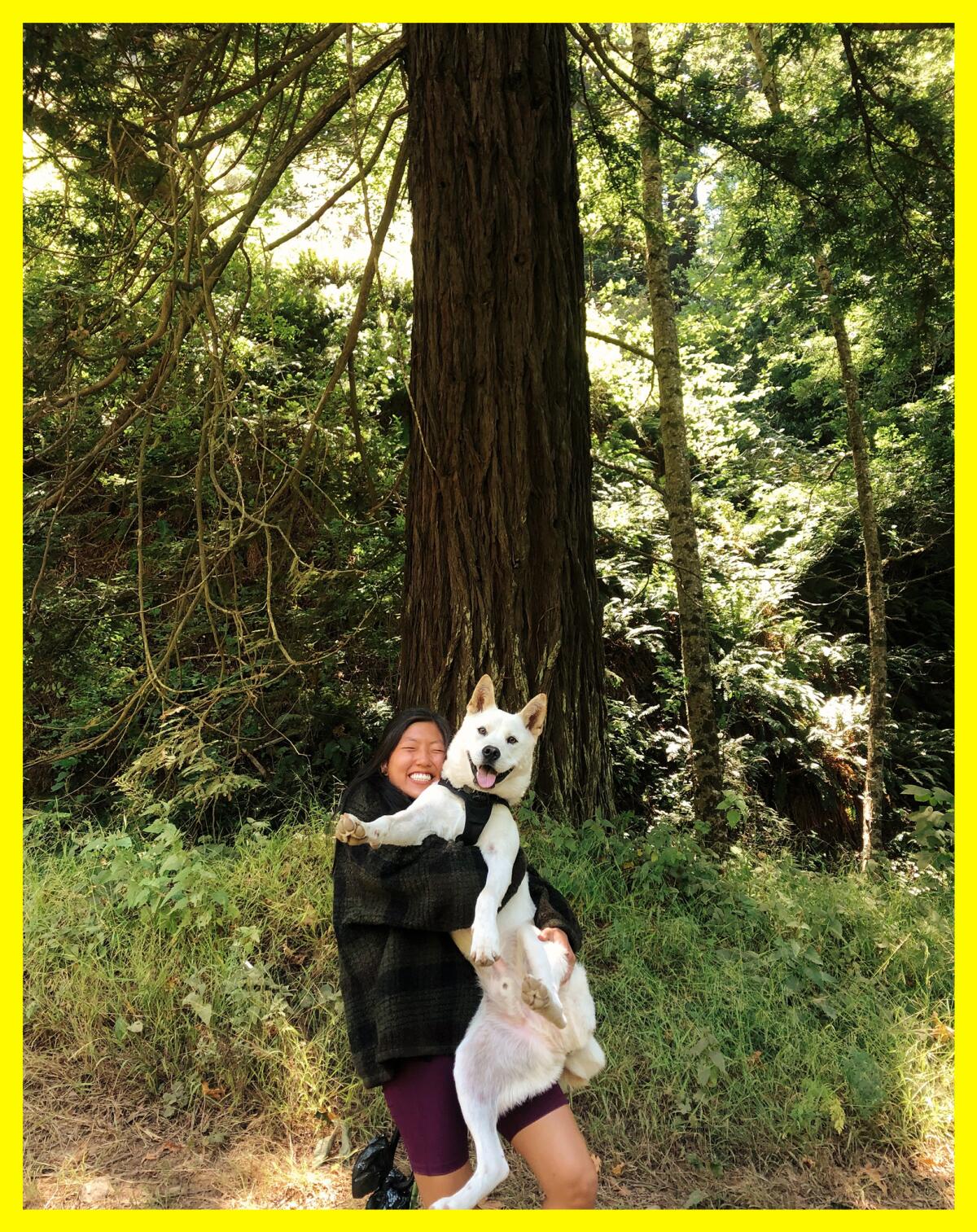
I climb at Touchstone, where I do already see a lot of Asian Americans, but I don’t see as many of our community hit the outdoors. Why is that?
This is an activity that is traditionally outdoors or started outdoors. We’re bringing it indoors to make it accessible, so people in the cities can do this training and climb without having to drive all the way out to the crag.
I have so many friends who are so scared to climb, and then they tried Bouldering and Boba once, and now they’re outdoors at Stoney Point bouldering. Climbing safely in the gym is the perfect gateway to another outdoor activity that they normally wouldn’t have been as excited to try.
You used to work at Hollywood Boulders. Were there ways in which you tried to make it an inclusive space?
If I played K-pop, it would just make a world of a difference. And that is just the smallest step. Now we have Lagartijas, whose work has been so important for me to amplify. Before the pandemic, I was a little bit nervous with climbing, like, “I don’t know if this is the right community for me.” It’s grown, and as I’ve grown, I feel like things have changed so much.
Outdoor Asian has chapters in Washington state, Oregon, Vermont, Colorado and Los Angeles. For more info or to join events, follow the group on Instagram or join its Facebook group.
3 things to do

1. Celebrate Bike Month with art. Cypress Park cycling education and repair spot the Bike Oven is hosting an art show from 7 to 11 p.m. May 27, with pieces that will highlight the ups and downs of riding in L.A., including the freedom and independence it can offer, and the social, environmental and health and wellness benefits. The space opens at 5 p.m., so come before the exhibit opens if you want to learn to repair your own bike. Suggested donation is $5, which will go to supporting the Bike Oven’s operations. However, no one will be turned away for lack of funds. All art sales go directly to the artists. Follow the Bike Oven on Instagram to stay updated on future events.

2. Witness a virtual global dance performance. If a dancer does a pirouette on the other side of the world, will Angelenos hear it? In the case of “Cosmogony,” the real-time virtual performance playing out on LED screens at Jerry Moss Plaza at the Music Center at 7 p.m. May 12 and June 3, 10 and 17, the answer is yes. Dancers from the Geneva-based digital contemporary dance company Cie Gilles Jobin will sport motion capture suits to perform an original contemporary work 6,000 miles away from DTLA. Throughout the 30-minute experience, you’ll see both digitally altered colorful landscapes and the dancers in their motion suits. Free and open to the public, this is the third installation from TMC Arts’ Digital Innovation Initiative.
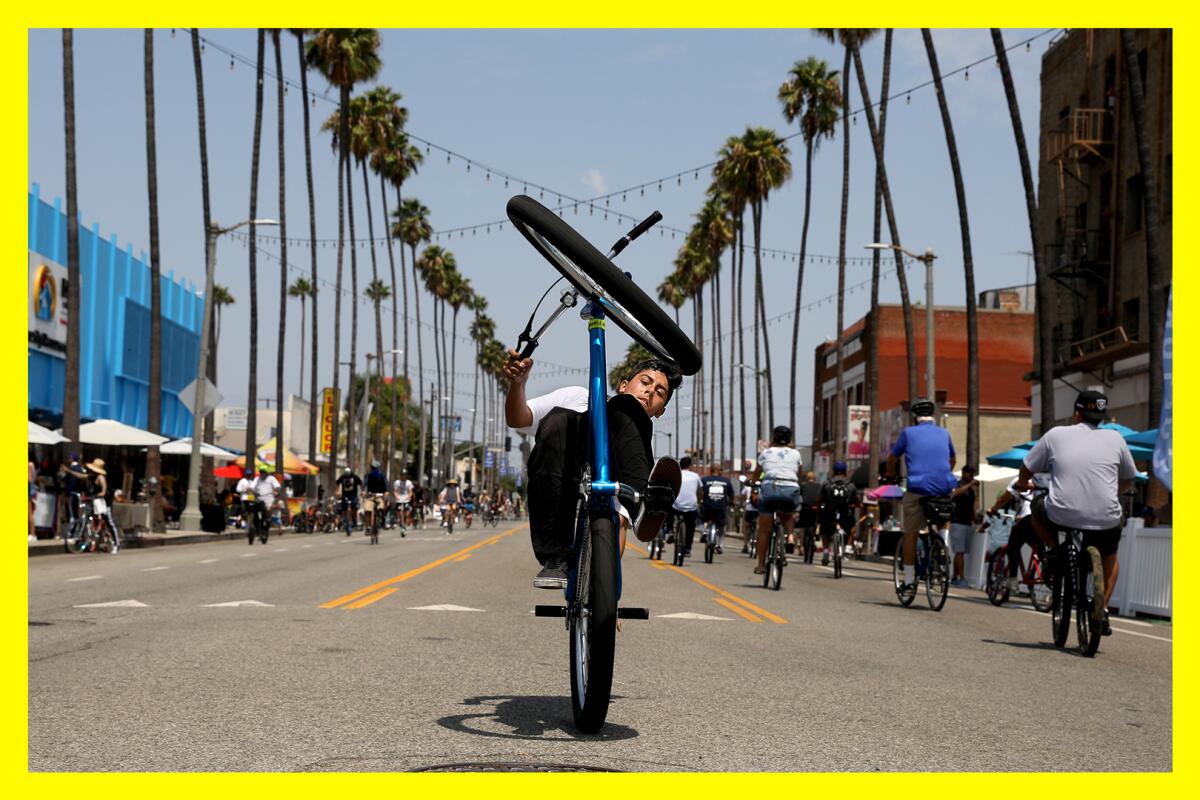
3. Compete in an underground bike race. Did you think the world of “fixies” was dead? If you’re ready, join this L.A. fixed gear competition hosted by the Los Angeles Underground World of Cycling and Trash Panda Cycling at a secret location from 8 p.m. May 26 to 2 p.m. May 28. There will be three stages — climb, criterium and cyclocross. This competition goes by elimination rules, so it’s not how many miles, but who’s the last biker pedaling. Get your tickets here; they range from $25 for one stage to $100 for the whole shebang.
The must-read

You might have a bucket list, but have you cross-referenced it with The Times’ new guide “The 101 Best California Experiences”? Times travel writer Christopher Reynolds has crisscrossed our beautiful state to bring you the most awe-inspiring, spectacular, life-changing experiences, from stargazing in Borrego Springs to feasting at Grand Central Market. Reynolds also brings our state’s fascinating history to the table, along with all the insider tips to make travel and outdoor adventure easier and more enjoyable.
Happy adventuring,

P.S.
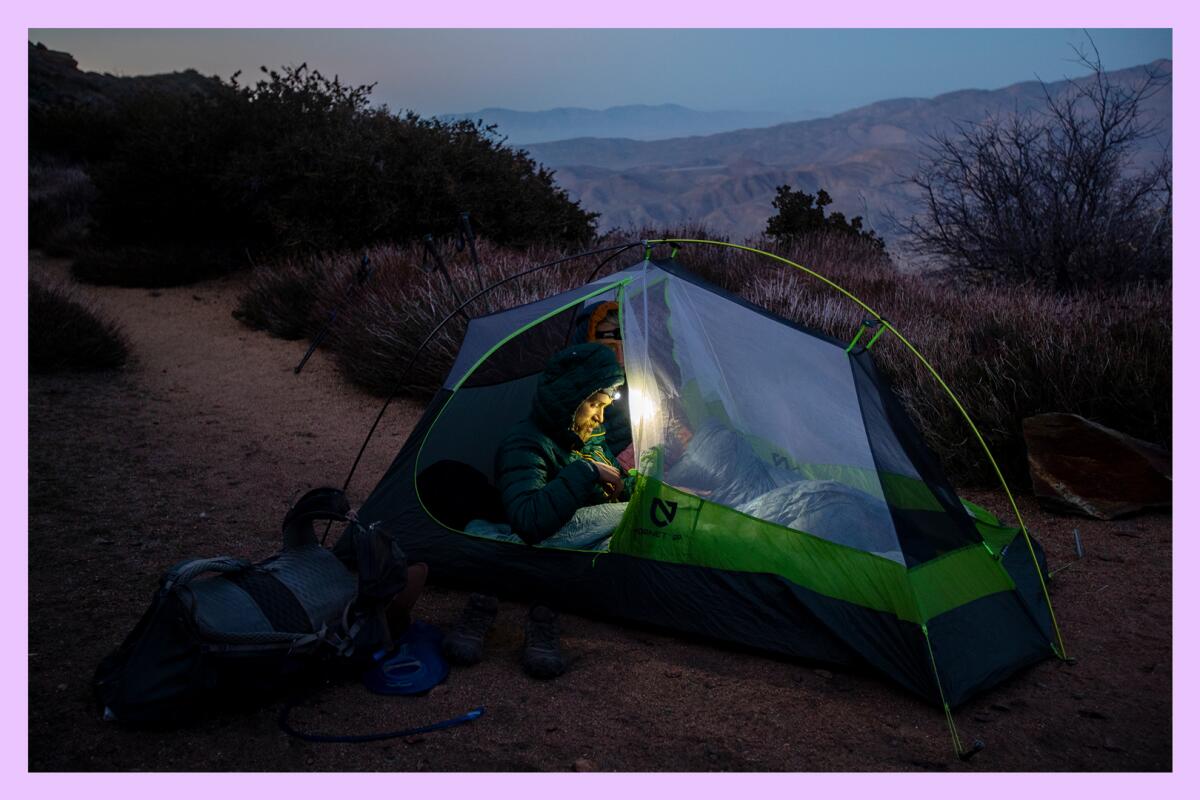
Lately, my husband and I have found it absolutely impossible to find campsites — in national parks, natch, but sometimes even in state parks or local campsites in the L.A. area.
Before kids, we might’ve opted for an off-the-grid BLM campsite, but now we often turn to Hipcamp for a last-minute option. The sites vary from pet- and kid-friendly, with toilets, water sources and campfires allowed, to barren patches of land in full sun with no water — literally, just a patch of land you’re allowed to camp on. They also vary pretty widely in price, so do your research. In a pinch, we’ve found the site a great last-minute option. For the long term, we’re considering buying a tiny teardrop trailer, but they’re pricey, so for now we need quality, kid-friendly recs. Holler if you have ’em!
For more insider tips on Southern California’s beaches, trails and parks, check out past editions of The Wild. And to view this newsletter in your browser, click here.
Sign up for The Wild
We’ll help you find the best places to hike, bike and run, as well as the perfect silent spots for meditation and yoga.
You may occasionally receive promotional content from the Los Angeles Times.




